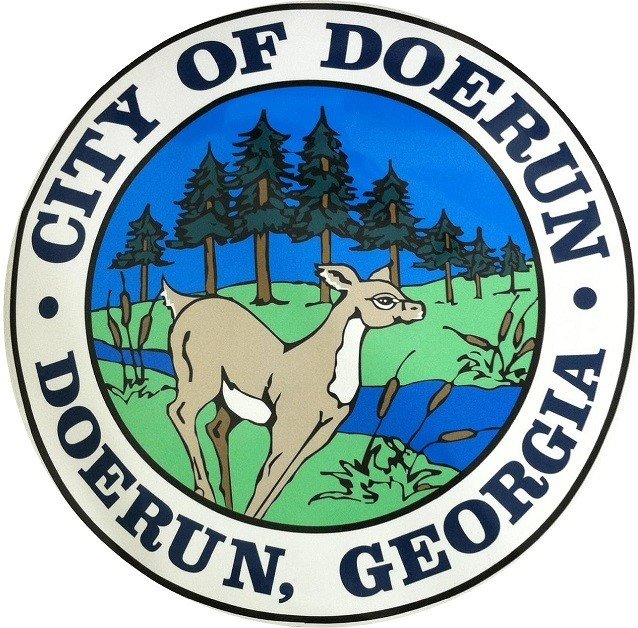Eddie Seagle: Sharing our landscapes with wildlife
Published 2:25 pm Monday, June 15, 2020

- Eddie Seagle is a Sustainability Verifier, Golf Environment Organization (Scotland), Agronomist and Horticulturalist, CSI: Seagle (Consulting Services International) LLC, Professor Emeritus and Honorary Alumnus (Abraham Baldwin Agricultural College), Distinguished Professor for Teaching and Learning (University System of Georgia) and Short Term Missionary (Heritage Church, Moultrie). Direct inquiries to csi_seagle@yahoo.com.
“A father is neither an anchor to hold us back, nor a sail to take us there, but a guiding light whose love shows us the way.” Unknown. “Father is the noblest title a man can be given.” Robert L. Backman. “A father is someone to look up to no matter how tall you grow.” Unknown. “My father gave me the greatest gift anyone could give another person. He believed in me.” Jim Valvano.
The days of June continue to come and go as we define a new normal in our lives practicing social distancing and proper hygiene. Summer is almost here and Father’s Day is coming! It only takes a few minutes of observation in our landscapes to note that members of the wildlife family like to hang out in our spaces, too. Let’s make another observation – these spaces used to be their spaces, and we invaded their neighborhoods and “developed” them, thus sharing our landscapes with wildlife is a must do.
There are the birds (songbirds and birds of prey), the squirrels, the rabbits, the foxes among others that we enjoy observing while they are frolicking about the grounds in search of food and home. And, the deer are pretty to observe. However, these same deer may practice a pruning pattern to most plants while we sleep which will annoy us and possibly destroy every effort we make to improve the landscape. Pruning by deer is a problem in many of our landscapes leaving our plants battered and beaten up. However, we are actually the guilty party for continuing to invade their spaces through construction and development, thus minimizing natural areas where they have been free to roam and survive.
Damage to ornamental plants caused by deer has increased significantly during the last few years. And this damage is both an urban and a rural problem due to increasing deer populations and suburban development strategies into natural woodlands. Deer are selective feeders that usually move slowly through the landscape and eat leaves and twigs from different trees, shrubs, and plants by jerking and tearing leaves, stems, and twigs. Signs of deer damage include jagged edges on parts left intact, and annual and perennial plants which are partially or completely pulled out of the ground. Deer damage to larger trees is to the lower limbs (up to about 5 or 6 feet off the ground which is about the limitation of their reach).
Deer may feed on certain plants is some landscapes and not others. Such feeding patterns may be due to the availability of natural food sources between landscapes and to the taste preferences of the individual deer. However, deer will eat almost any plant rather than face starvation. Deer favorites include narrow-leaf evergreens, daylilies, English ivy, hosta, and about any plant that has been fertilized.
Deer typically avoid prickly, poisonous or strong-scented plants. While many plants are deer tolerant, very few are deer-proof. Thus, careful plant selection should be a high priority where heavy deer populations thrive. Plants that offer good deer tolerance and distract deer with their aromatic (scented) foliage are listed as follows.
Asclepias tuberosa (butterfly weed): Reaching a height of 2 to 4 feet and a spread of 2 to 3 feet, this tough perennial offers clusters of orange flowers in the summer. It prefers placements in full sun (beds and borders) in a well-drained soil and tolerates heat and drought. It attracts many kinds of butterflies and works well in dried arrangements. Monarch butterfly larvae feed on its leaves but seldom harm this native plant. It is slow to emerge in the spring and deadhead faded blooms after flowering before seed development to limit spread. Works well with catmint, coreopsis and fountaingrass.
Dianthus spp. (dianthus or pinks): Reaching a height of 30-inches and a width of 18-inches, this enchanting, drought-tolerant perennial offers spicily fragrant flowers of pink, red, white, rose, and lavender in the spring, summer and fall and grass-like blue-green foliage. It prefers placement in full sun (containers, beds, borders and slopes) in a well-drained soil. It attracts hummingbirds and butterflies, and looks great as a cut flower and in dried arrangements. Works well with perennial geranium, coralbells, and iris.
Rosmarinus officinalis (rosemary): Reaching a height of 5-feet and a width of 3-feet, this drought-tolerant, evergreen, herbal shrub offers flowers with shades of pink or blue and leathery leaves with a scent of the Mediterranean. Leaves also add fresh herbal flavor in the kitchen preparations. It prefers placement in full sun (containers, beds, borders and slopes) in a well-drained soil with a gravel mulch. It is known as a symbol of remembrance and friendship, and fills the landscape with aroma, flavor, and activity (pollinating bees are attracted to the blooms). It attracts birds and butterflies.
Also, Acanthus mollis (Bear’s Breeches), Buxus sempervirens (English boxwood), Caryopteris spp. (bluebeard), Chrysanthemum spp. (mums), Crocosmia spp. (Crocosmia), Epimedium spp. (barrenwort or bishop’s cap), Eupatorium purpureum (Joe Pye Weed), Juniperus spp. (Juniper), Kniphofia spp. (red-hot poker), Perovskia atriplicifolia (Russian sage), Phormium spp. (New Zealand flax), and Solidago spp. (goldenrod). And mint, thyme, French tarragon, lavender, chives, sage and rosemary.
Deer are often frightened away by loud noises and sudden movement. Also, hang wind chimes from the branches of trees and shrubs, place wind spinners throughout your garden, or install a motion-activated sprinkler that will startle them with a sudden spray of water. Deer love the tender new leaves and shoots of groundcovers in the spring. As a distraction, treat area with deer repellent, blood meal, or fish emulsion. And, if crows are a problem, wave a white towel at them while you are audibly inviting them to leave the premises.
Welcome summer everyone and happy Father’s Day to all fathers out there. And, remember to pray for one another, our nation, and those around the world who are hurting and suffering. God bless each of you!
“For our struggle is not against flesh and blood, but against the rulers, against the authorities, against the powers of this dark world and against the spiritual forces of evil in the heavenly realms.” Ephesians 6:12. “Therefore put on the full armor of God, so that when the day of evil comes, you may be able to stand your ground, and after you have done everything, to stand.” Ephesians 6:13.
Eddie Seagle is a Sustainability Verifier, Golf Environment Organization (Scotland), Agronomist and Horticulturalist, CSI: Seagle (Consulting Services International) LLC, Professor Emeritus and Honorary Alumnus (Abraham Baldwin Agricultural College), Distinguished Professor for Teaching and Learning (University System of Georgia) and Short Term Missionary (Heritage Church, Moultrie). Direct inquiries to csi_seagle@yahoo.com.





